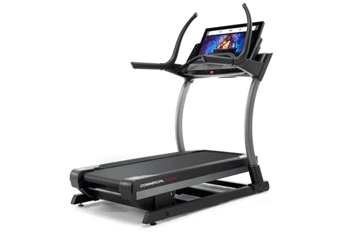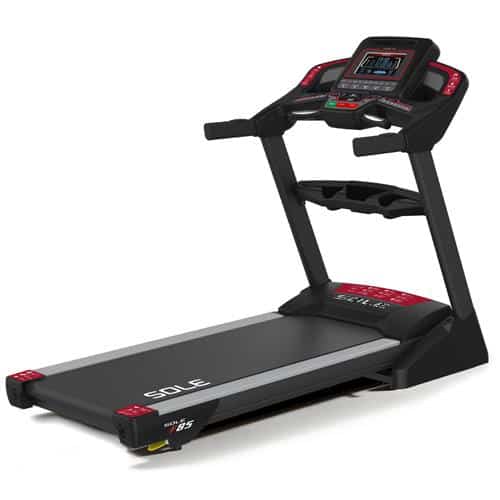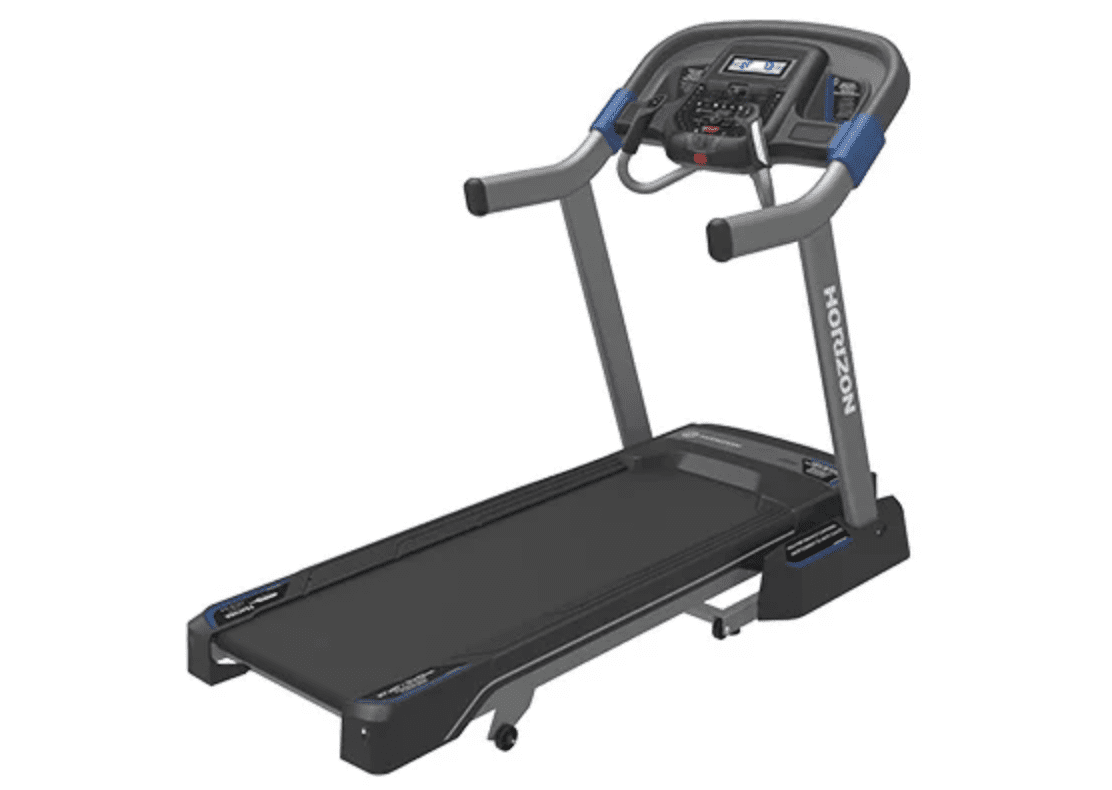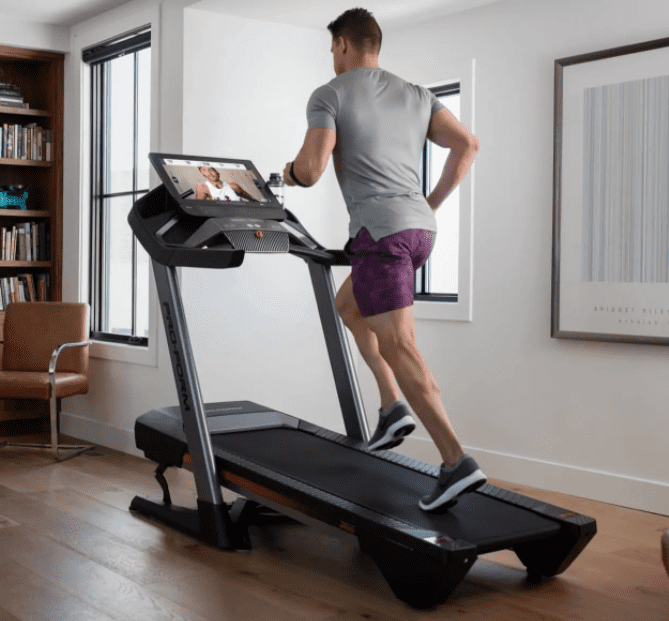Table of Contents
A Look at Virtual Reality Workouts
These days, technology is woven into almost every aspect of our lives. Yes, it’s everywhere!
- We use it to communicate with co-workers and loved ones – the text or chat box is often more convenient than walking down the hallway to talk in person!
- We use Netflix or Hulu to binge watch our favorite TV shows – remember the days of antennae and video recording!?
- Even our cell phones now use facial recognition technology and augmented reality to enhance our experience and provide security.
It’s nuts!

Pretty soon, we’ll all have self-driving cars, in-home computer assistants, and be escaping to the virtual world just like the characters in the sci-fi book Ready Player One!
So as we embrace technology more and more, it only makes sense that we use it to improve our exercise and fitness as well.
Many treadmill brands already offer programming that provides some aspect of virtual reality… iFit Live, ViaFit and RunSocial to name a few. These programs are great for motivation and make your workout fun, but what if they can do more than that?
New studies have shown that virtual reality (VR) for exercise may be more beneficial than just providing entertainment. It can actually help you endure pain, push harder and run farther!
Harder, Better, Faster, Stronger!
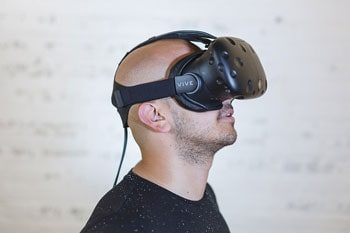
In a study published in Psychology of Sport and Exercise, researchers at the University of Kent in England tested whether virtual reality could help individuals increase their exercise performance and push through physical pain.
The research team selected eighty individuals and placed half in a VR group and the other half in a Non-VR group. Each person then performed a “continuous pain task”, in the form of an isometric bicep curl (holding a dumbbell out from their body without lowering it for as long as possible).
While they were doing this, participants reported pain intensity and perception of effort. Researchers also measured their heart rate from start time to exhaustion.
The non-VR subjects lasted an average of 4.14 minutes before they had to lower the dumbbell. The VR subjects lasted 5.34 minutes on average, that’s over a full minute longer!
Not only could they perform the task for longer, the VR subjects reported less pain and lower perceived energy exertion.
The Secret Behind Virtual Reality and Exercise
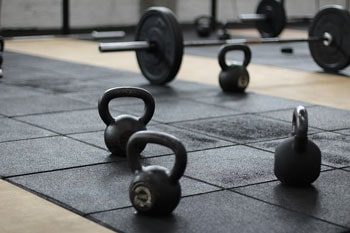
He suggests that visual cues may have a lot to be with it. “In the VR games, subjects didn’t see their forearms shake with exhaustion or their hands flush with color as blood rushed to their aching bicep. They just saw a steady virtual arm holding a weight,” says Alexis.
This means that when VR hides visual signs that we associate with pain and exhaustion, our brain doesn’t register them either! This allows you to work longer and harder than you would if you were seeing those things.
Other Cool Uses for Virtual Programming
Virtual Reality for Parkinson’s Disease – It may seem unbelievable that virtual reality could help with an actual physical disease, but that’s exactly what it does.
A study published in the Journal of Gerontology has shown that VR can help Parkinson’s sufferers with their ability to walk, as well as protect them from the dangers of a fall.
Researchers used virtual reality programming on a treadmill to practice and test physical performance in individuals with Parkinson’s. The results showed significant improvement in all areas.
This not only allows Parkinson’s sufferers to move and walk with more confidence, but would also be helpful for an aging population that is more likely to suffer an injury or fall during exercise.
Use Sound To Move Faster – We have talked about the visual benefits of VR, but music provides audio benefits that can help with your workout too! Studies have shown that the tempo of music can cause people to walk faster or slower based on the beat.
Researchers at the University of Portsmouth in the UK, tested 11 participants on a treadmill with music of different tempos. They saw a 16% increase in walking speed with faster music!
If you don’t have access to VR, you can use music to help push yourself during your workout.
How Can You Take Advantage of Virtual Reality Tech?
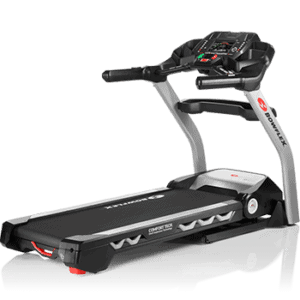
Bowflex BXT 216 treadmill – Read our full review here.
Virtual reality programming can help you get a more effective workout every time you step onto your treadmill. The idea of “tricking our brain” works exactly the same no matter your age or ability level! It distracts you so that you can push yourself harder and farther than you normally would. This leads to better results.
Many treadmill brands offer virtual programming to help you get the most out of every workout.
iFit Live – This program is available on NordicTrack and ProForm models and provides a wide range of visual and audio motivation. With iFit, you can pick a coach right on your screen to lead you through a challenging workout or help you train for a race.
You can also pick fun, new routes and actually see the landscape around you on your screen. A run along the Grand Canyon sounds like a great way to start the day and push yourself one step closer to your goals!
RunSocial – BowFlex takes your virtual run and makes it a social gathering! With RunSocial you can not only choose your route from anywhere in the world, you can invite a friend to go with you. Meeting a friend for a beach run in Australia may be just what you need to push through that extra mile today.
ViaFit and Passport – The Passport program on Horizon and Matrix treadmills allows you to choose new and exciting routes from a variety of beautiful locations across the globe. It can also connect with your TV to give you a larger, more immersive experience.
Partner this with ViaFit to upload your progress and set goals. This way you can track your progress and see yourself getting in shape.
Embracing new technology can be fun and entertaining, but it can also help you become the best version of yourself. When you can trick your brain into thinking you are faster and stronger, there’s nothing stopping you from being faster and stronger!
Sources:
Is your virtual self as sensational as your real? Virtual Reality: The effect of body consciousness on the experience of exercise sensations: Maria Matsangidou, Chee Siang Ang, Alexis R. Mauger, Jittrapol W Intarasirisawat, Boris Otkhmezuri, Marios N. Avraamides; 2018
VR Boosts Workouts by Unexpectedly Reducing Pain During Exercise: Emma Beutel; 2018
Virtual Reality for Gait Training: Can It Induce Motor Learning to Enhance Complex Walking and Reduce Fall Risk in Patients With Parkinson’s Disease?: Anat Mirelman Inbal Maidan Talia Herman Judith E. Deutsch Nir Giladi Jeffrey M. Hausdorff; 2011
Sounding Better: Fast Audio Cues Increase Walk Speed in Treadmill-Mediated Virtual Rehabilitation Environments: Wendy Powell, Brett Stevens, Steve Hand, Mauren Simmonds; 2010


